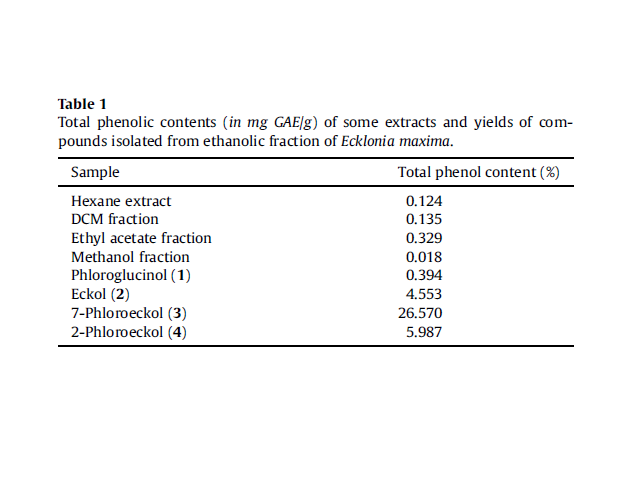Isolation, identification and radical scavenging activity of phlorotannin derivatives from brown algae, Ecklonia maxima: An experimental and theoretical study
Keywords:
Brown algae , Ecklonia maxima , Phlorotannins , Radical scavenging activity , Hydrogen atom transfer mechanismAbstract
Aim & background: Phlorotannins are a family of polyphloroglucinols with numerous biological activities including anticancer, antimalarial and antioxidant. They are highly sought for utilization in food ingredients, animal feeds, fertilizers and medicines. This work reports the isolation, from brown algae, of four phlorotannin derivatives namely phloroglucinol (1), eckol (2), 7-phloroeckol (3) and 2-phloroeckol (4). Their radical scavenging activity was assayed to elucidate their capacity to scavenge free radical species. Their structural and electronic features were then compared across structures to provide an explanation for the differences in their radical scavenging properties. Moreover, the two main radical scavenging mechanisms, namely hydrogen atom transfer (HAT) and electron transfer (ET), were checked to determine the preferred mode of radical scavenging. Methods: Polyphenols were determined spectrophotometrically according to the FolineCiocalteu colorimetric methods and the antioxidant assays were determined by means of ORAC assay and the Trolox equivalent antioxidant capacity (TEAC) assay. Theoretical studies were performed by means of the Density Functional Theory (DFT) method. Results: Theoretical predictions indicate that the radical scavenging activities follow the order 1 < 2 < 4 < 3. Theoretical study also indicates that ET mechanism could be more significant than HAT mechanism because of the high BDE values. Conclusion: Overall, the results suggest that the position of substitution of phloroglucinol unit on eckol (2) plays a significant role in determining the radical scavenging ability of the resulting eckol derivatives.
Downloads
Metrics





